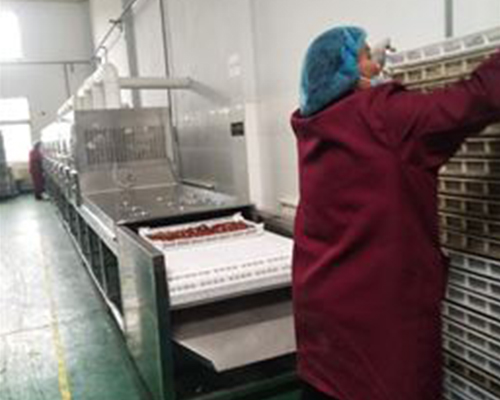Ultraviolet is a kind of light wave invisible to the naked eye, which exists outside the ultraviolet end of the spectrum, so it is called ultraviolet. Ultraviolet ray is one of the electromagnetic waves radiated by the sun. It is a special form of material operation, which is a flow of particles that are not connected. Each UV photon with a wavelength of 253.7 nm has an energy of 4.9 eV. When ultraviolet rays irradiate microorganisms, energy transfer and accumulation will occur, and the accumulation results in the inactivation of microorganisms, thus achieving the purpose of disinfection. When bacteria and viruses absorb more than 3600~65000uW/cm2, it has a strong destructive power to the DNA and RNA of bacteria and viruses, and can make bacteria and viruses lose their viability and fecundity, thereby eliminating bacteria and viruses, achieving disinfection and sterilization effect. On the one hand, ultraviolet light can mutate nucleic acids, hinder their replication, transcriptional blockade and protein synthesis; On the other hand, the production of free radicals can cause photoionization, which will lead to cell death. Breeding sterilization and disinfection equipment The sterilization principle is to use the radiation intensity of the ultraviolet lamp, that is, the radiation intensity emitted by the ultraviolet sterilization lamp is inversely proportional to the distance of the irradiated disinfectant. When the irradiation intensity is constant, the longer the residence time of the irradiated disinfectant is, the closer it is to the sterilization lamp tube, the better the sterilization effect will be. On the contrary, the worse the sterilization effect will be. This equipment can be used in direct drinking water equipment to obtain good water purification effect.

Microwave electrodeless ultraviolet sterilization equipment It is a special form of material operation, which is a flow of particles that are not connected. Each UV photon with a wavelength of 253.7 nm has an energy of 4.9 eV. When ultraviolet rays irradiate microorganisms, energy transfer and accumulation will occur, and the accumulation results in the inactivation of microorganisms, thus achieving the purpose of disinfection. When bacteria and viruses absorb more than 3600~65000uW/cm2, it has a strong destructive power to the DNA and RNA of bacteria and viruses, and can make bacteria and viruses lose their viability and fecundity, thereby eliminating bacteria and viruses, achieving disinfection and sterilization effect. On the one hand, ultraviolet light can mutate nucleic acids, hinder their replication, transcriptional blockade and protein synthesis; on the other hand, the generation of free radicals can cause photoionization, thus leading to cell death.
microwave Electrodeless ultraviolet sterilization equipment The sterilization principle is to use the radiation intensity of the ultraviolet lamp, that is, the radiation intensity emitted by the ultraviolet sterilization lamp is inversely proportional to the distance of the irradiated disinfectant. When the irradiation intensity is constant, the longer the irradiated disinfectant stays, the closer it is to the germicidal lamp, the better its germicidal effect, and vice versa. With strong destructive power, it can make bacteria and viruses lose their viability and reproduction, and then eliminate bacteria and viruses to achieve disinfection and sterilization effect.
